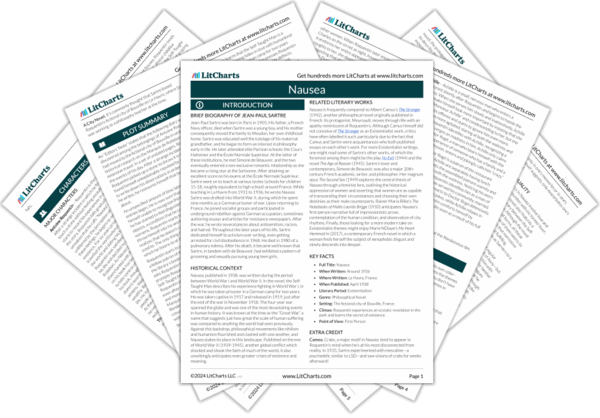Nausea is frequently compared to Albert Camus’s
The Stranger (1942), another philosophical novel originally published in French. Its protagonist, Meursault, moves through life with an apathy reminiscent of Roquentin’s. Although Camus himself did not conceive of
The Stranger as an Existentialist work, critics have often labelled it such, particularly due to the fact that Camus and Sartre were acquaintances who both published essays on each other’s work. For more Existentialist writings, one might read some of Sartre’s other works, of which the foremost among them might be the play
No Exit (1944) and the novel
The Age of Reason (1945). Sartre’s lover and contemporary, Simone de Beauvoir, was also a major 20th-century French academic, writer, and philosopher. Her magnum opus
The Second Sex (1949) explores the central thesis of
Nausea through a feminist lens, outlining the historical oppression of women and asserting that women are as capable of transcending their circumstances and choosing their own destinies as their male counterparts. Rainer Maria Rilke’s
The Notebooks of Malte Laurids Brigge (1910) anticipates
Nausea’s first-person narrative full of impressionistic prose, contemplation of the human condition, and observation of city rhythms. Finally, those looking for a more modern take on Existentialist themes might enjoy Marie NDiaye’s
My Heart Hemmed In (2017), a contemporary French novel in which a woman finds herself the subject of xenophobic disgust and slowly descends into despair.
